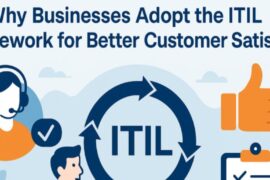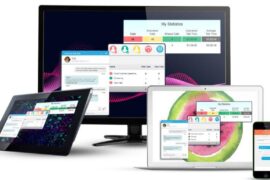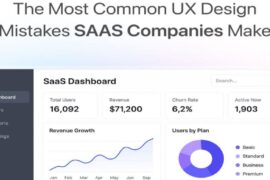In today’s fast-paced digital world, staying informed and up-to-date is crucial for individuals and businesses alike. Email alert software plays a vital role in ensuring timely notifications about important events, updates, or changes. Whether it’s monitoring website traffic, tracking social media mentions, or staying informed about industry news, email alert software simplifies the process by delivering relevant information directly to your inbox.
Email alerts provide a convenient way to stay informed without the need to constantly monitor various sources manually. By setting up customized alerts, users can receive notifications tailored to their specific interests or needs. This not only saves time but also ensures that important information is never missed, allowing for prompt action when necessary. And according to a DeskAlerts spokesperson, this is a big advantage because in a flood of emails, employees can miss valuable information and the company can lose revenue because of it.
Types of Email Alert Software
- Basic Email Alert Tools. Basic email alert tools offer essential notification functionality, allowing users to set up alerts based on specific keywords, phrases, or events. These tools are typically straightforward to use and are suitable for individuals or small businesses with basic monitoring needs.
- Advanced Email Alert Software. Advanced email alert software provides a wide range of customizable features and advanced monitoring capabilities. These tools often include options for real-time alerts, advanced filtering options, and integration with other software platforms, making them ideal for larger organizations or those with complex monitoring requirements.
Features to Look for in Email Alert Software
When choosing email alert software, it’s essential to consider the following features to ensure it meets your needs effectively:
- Customization Options. Look for software that allows you to customize alerts based on specific criteria, such as keywords, sources, or geographic location.
- Notification Methods. Ensure the software offers multiple notification methods, such as email, SMS, or mobile app notifications, to ensure you receive alerts wherever you are.
- Integration Capabilities. Choose software that integrates seamlessly with other tools or platforms you use, such as CRM systems or social media management tools, to streamline your workflow.
- Reporting and Analytics. Opt for software that provides robust reporting and analytics features, allowing you to track the effectiveness of your alerts and make informed decisions based on data.
How to Choose the Right Email Alert Software
To choose the right email alert software for your needs, follow these steps:
- Assess Your Needs. Determine what specific alerts you require and what features are essential for your workflow.
- Compare Features and Pricing. Research different software options and compare their features, pricing, and scalability.
- Read Reviews and Testimonials. Look for reviews from other users to get insights into the software’s performance and reliability.
Tips for Using Email Alert Software Effectively
To make the most of your email alert software, consider the following tips:
- Set Clear Alerts. Be specific about the criteria for your alerts to ensure you only receive relevant notifications.
- Optimize Notification Settings. Customize your notification preferences to ensure you receive alerts in a timely manner without being overwhelmed.
- Regularly Review and Update Alerts. Periodically review and update your alert settings to reflect any changes in your monitoring needs or priorities.
Future Trends in Email Alert Software
As technology continues to advance at a rapid pace, the landscape of email alert software is expected to undergo significant transformations. Here are some key trends and developments anticipated in the near future:
- Artificial Intelligence Integration. One of the most significant trends shaping the future of email alert software is the integration of artificial intelligence (AI) capabilities. AI-powered algorithms can analyze vast amounts of data with unprecedented speed and accuracy, enabling email alert systems to deliver more intelligent and contextually relevant notifications.
AI can enhance email alert software in several ways:
- Improved Relevance: AI algorithms can analyze user behavior, preferences, and historical data to personalize alert recommendations, ensuring that users receive only the most relevant and timely notifications.
- Predictive Alerts: By leveraging machine learning techniques, email alert software can anticipate users’ needs and proactively send alerts based on predictive analytics, helping users stay ahead of emerging trends or potential issues.
- Natural Language Processing (NLP): NLP technology enables email alert systems to understand and interpret unstructured data, such as news articles or social media posts, allowing for more comprehensive monitoring and analysis.
- Enhanced Automation Features: Automation will play a crucial role in the future evolution of email alert software, streamlining processes and reducing manual intervention. Advanced automation features will enable users to create complex alert workflows and trigger actions based on predefined conditions.
Key automation capabilities include:
- Workflow Orchestration: Email alert software will offer visual workflow builders that allow users to create and customize alert workflows without writing code. This will simplify the process of setting up intricate alert configurations and integrating with other tools and systems.
- Event-Driven Alerts: Automation rules can be triggered by specific events or conditions, such as changes in website traffic, social media engagement, or stock prices. Users can define rules to automatically send alerts or initiate follow-up actions in response to these events.
- Intelligent Escalation: Automated escalation mechanisms can ensure that critical alerts are promptly addressed by escalating notifications to designated individuals or teams if they remain unacknowledged or unresolved after a certain period.
- Integration with Collaboration Tools: In the future, email alert software will become more tightly integrated with collaboration and communication platforms, facilitating seamless information sharing and team collaboration. Integration with tools such as Slack, Microsoft Teams, and Trello will enable users to receive and act on alerts directly within their preferred collaboration environments.
Key integration benefits include:
- Real-Time Collaboration: Email alert notifications can be delivered to team channels, allowing team members to discuss and respond to alerts in real-time without switching between different tools or platforms.
- Task Assignment and Tracking: Integration with project management tools enables users to create tasks or tickets directly from alert notifications, streamlining issue resolution and tracking progress.
- Cross-Platform Accessibility: Users can access and interact with alert notifications from any device or platform, ensuring that critical information is always accessible, whether in the office or on the go.
- Enhanced Security and Privacy Features: With growing concerns about data security and privacy, future email alert software will prioritize robust security measures to protect sensitive information and ensure compliance with regulatory requirements.
Key security and privacy features include:
- End-to-End Encryption: Email alert systems will implement end-to-end encryption to secure the transmission of sensitive alert data and protect it from unauthorized access or interception.
- Granular Access Controls: Administrators can define granular access controls to restrict access to sensitive alerts and data based on user roles and permissions, ensuring that only authorized users can view or act on certain information.
- Audit Trails and Compliance Reporting: Email alert software will offer comprehensive audit trails and compliance reporting features to track user activities, monitor alert interactions, and demonstrate compliance with data protection regulations such as GDPR and CCPA.
By embracing these future trends and advancements, email alert software will continue to evolve as a critical tool for staying informed, proactive, and secure in an increasingly digital and interconnected world.
Conclusion
Email alert software offers a convenient and efficient way to stay informed about important events, updates, and changes in today’s fast-paced digital landscape. By choosing the right software and following best practices for usage, users can effectively manage their alerts and make informed decisions based on timely information.































